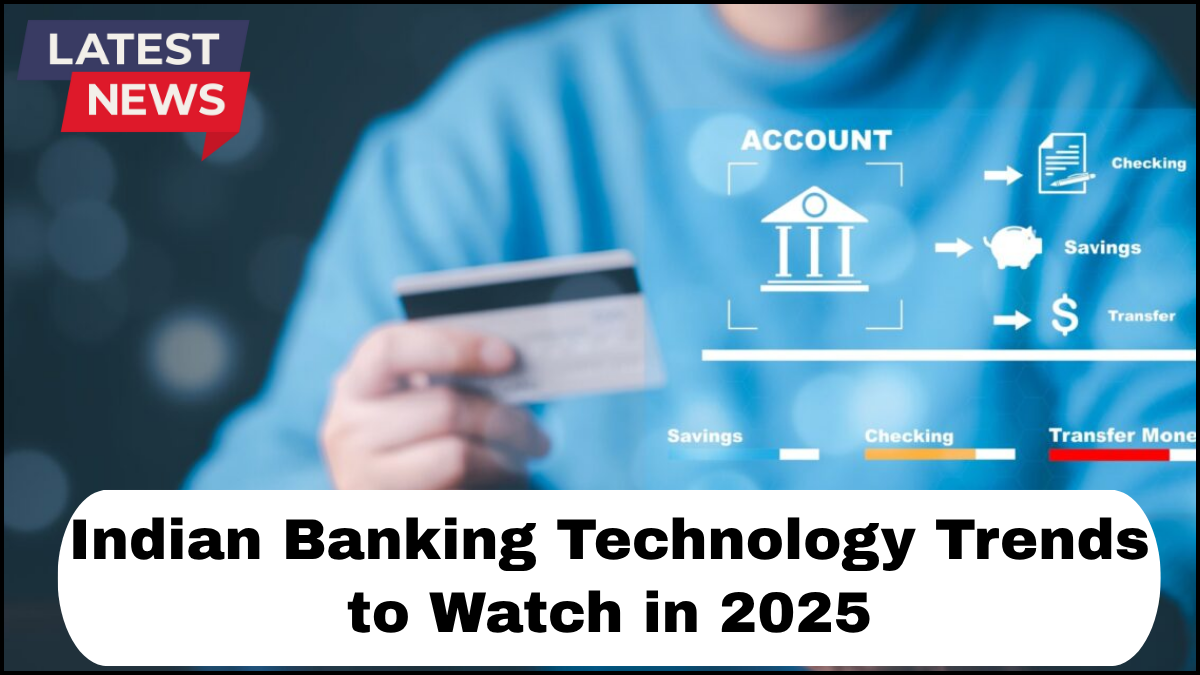India’s banking landscape is transforming at a rapid pace, driven by a blend of digital innovation, regulatory reforms, and evolving customer expectations. As 2025 approaches, the sector is on the brink of deeper disruption. From the rise of AI-driven tools to the expansion of neobanks and the evolution of UPI, here’s a breakdown of the top Banking Technology Trends in 2025 that will shape the future of financial services in India.

UPI 3.0 and Beyond: More Than Just Payments
The Unified Payments Interface (UPI) has already revolutionized the Indian digital payments ecosystem. By 2025, it’s not just about faster money transfers — UPI is evolving into a comprehensive financial rail. Upcoming features like credit on UPI, automatic recurring mandates, and international transaction capabilities will make it an even more versatile platform.
What to Expect:
-
UPI integration with credit cards and personal loans.
-
Expansion of UPI Lite for offline transactions in rural areas.
-
Cross-border payments through tie-ups with international networks.
This evolution will push India further into a cashless economy while empowering consumers with seamless, low-cost financial services.
The Rise of Neobanks: Redefining Digital Banking
Neobanks — fully digital banks without physical branches — are rapidly gaining traction in India. By 2025, their presence is expected to be more mainstream, particularly among tech-savvy millennials and SMEs looking for efficient, no-frills banking solutions.
Key Drivers of Growth:
-
Faster account setup and onboarding.
-
Intuitive, app-first user experiences.
-
Tailored financial products like automated expense tracking and instant business loans.
Leading fintechs like Jupiter, Fi, and RazorpayX are already setting the pace. In 2025, partnerships between neobanks and traditional banks will likely expand, combining agility with regulatory backing.
AI Tools and Hyper-Personalization
Artificial Intelligence is set to become a core engine of decision-making across Indian banks. In 2025, AI tools will go beyond basic chatbots or fraud detection — they’ll be critical in personalizing customer experiences, optimizing credit scoring, and automating back-end processes.
Notable Applications:
-
Predictive analytics for product recommendations.
-
AI-driven risk assessment for faster loan approvals.
-
Natural language processing (NLP) to understand regional dialects in voice banking.
Banks that leverage AI effectively will offer smarter, faster, and more relevant services — improving customer retention and reducing operational costs.
Digital Onboarding and e-KYC 2.0
Customer onboarding is becoming faster and more secure. With enhancements in e-KYC (electronic Know Your Customer) processes, banks are now using facial recognition, document scanning, and biometric verification in real-time.
By 2025, expect:
-
AI-powered fraud detection during onboarding.
-
Use of blockchain to securely store and verify identity data.
-
Integration with DigiLocker for instant document validation.
This shift makes it easier for individuals in remote areas to access banking services, helping fulfill the broader goal of financial inclusion.
Blockchain in Core Banking Systems
While still in its early stages in India, blockchain is beginning to find its way into core banking infrastructure. By 2025, we’ll likely see increased experimentation in areas like loan syndication, trade finance, and reconciliation.
Benefits for Banks:
-
Immutable ledgers reduce errors and fraud.
-
Smart contracts automate compliance-heavy processes.
-
Real-time settlements across banks and geographies.
Regulators like RBI are closely monitoring pilot programs, which means we may soon see standardized frameworks supporting blockchain in mainstream banking.
Cybersecurity: Zero Trust Architecture Becomes Standard
With increased digitization comes increased risk. Banks in 2025 will prioritize Zero Trust Architecture, which assumes no system or user can be trusted by default. This layered security model is essential as banks defend against increasingly sophisticated cyber threats.
Key Strategies:
-
Continuous monitoring of user behavior.
-
Multi-factor authentication and biometric logins.
-
AI-based anomaly detection and response systems.
Investments in cybersecurity aren’t just about protecting data — they’re about preserving trust in a digital-first financial ecosystem.
Embedded Finance and Banking-as-a-Service (BaaS)
In 2025, more non-banking platforms will offer financial products directly to consumers, thanks to Banking-as-a-Service. Think loan offers inside e-commerce apps or investment options embedded in ride-sharing platforms.
This trend enables banks to reach customers through third-party ecosystems, delivering personalized services where users already spend their time.
Green Banking and ESG-Driven Innovation
Sustainability is no longer optional. Indian banks are incorporating Environmental, Social, and Governance (ESG) metrics into their product offerings and operations.
By 2025:
-
Green loans and carbon-neutral investment portfolios will be more common.
-
Banks will use tech to track and report ESG impact.
-
Customers may receive incentives for choosing eco-friendly banking options.
Frequently Asked Questions (FAQ)
Q1. What are the most important banking technology trends in 2025?
The top trends include advanced UPI features, the rise of neobanks, AI-driven personalization, blockchain integration, and cybersecurity innovations.
Q2. How will AI tools impact banking in India by 2025?
AI tools will drive hyper-personalization, automate operations, detect fraud in real time, and enhance customer service using chatbots and voice banking.
Q3. What role will neobanks play in the future of Indian banking?
Neobanks will provide digital-first experiences with lower overheads and faster services, especially appealing to younger customers and small businesses.
Q4. How is UPI expected to evolve in 2025?
UPI is expanding into credit, international payments, and offline access, making it a foundational tool for both personal and business transactions.
Q5. What is Banking-as-a-Service and why does it matter?
BaaS enables non-banking companies to offer financial products, allowing banks to reach new customers and generate revenue through digital partnerships.
click here to learn more